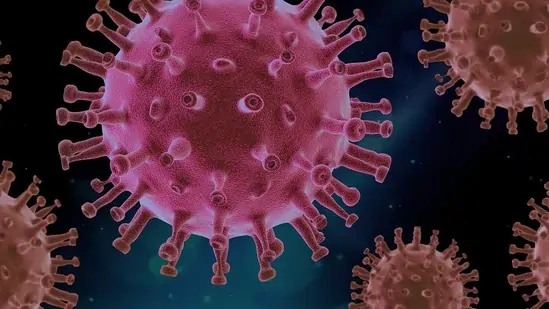New Delhi: In a stark revelation that underscores the widening gap in global health outcomes, a comprehensive analysis in The Lancet has spotlighted India’s troubling escalation in fatalities linked to non-communicable diseases (NCDs) from 2010 to 2019. While the majority of nations worldwide celebrated reductions in these preventable yet persistent killers—ranging from cardiovascular ailments to various forms of cancer—India stands out as one of the rare exceptions where the shadow of chronic illness grew longer. This period, predating the disruptions of the COVID-19 era, offers a critical lens into the pre-pandemic health landscape across 185 countries, revealing not just statistical shifts but deeper systemic vulnerabilities in India’s public health framework.
The study’s findings, spearheaded by experts at Imperial College London’s School of Public Health, paint a picture of resilience in some corners of the globe juxtaposed against India’s uphill battle. As non-communicable diseases continue to claim lives at an unprecedented rate in the world’s most populous nation, urgent questions arise about lifestyle shifts, environmental pressures, and policy gaps. This report delves into the nuances of the data, unpacking why heart conditions and diabetes emerged as frontrunners in this mortality spike, how India’s trajectory diverges from powerhouses like China and the United States, and what targeted strategies could reverse the tide.

Unpacking the Lancet Study: A Decade of Divergent Health Trajectories
At its core, the research monitored the evolution of NCD-related deaths over nearly a decade, focusing on the likelihood of succumbing to these conditions before reaching 80 years of age. Non-communicable diseases, by definition, encompass long-term health issues that do not spread person-to-person, including major categories like cardiovascular disorders (think heart attacks and strokes), oncology cases, ongoing respiratory issues such as asthma or chronic obstructive pulmonary disease (COPD), and metabolic disorders like diabetes.
Globally, the narrative from 2010 to 2019 was one of progress. In 152 countries—accounting for 82% of the female population worldwide—the odds of an NCD-related death before 80 dipped noticeably. For men, the figure stood at 147 nations, or 79% coverage. Wealthy Western nations led the charge, with Denmark posting the steepest drops and the U.S. trailing but still advancing. Emerging giants like China, Brazil, Russia, Egypt, and even Nigeria mirrored this success for both genders, driven largely by slashes in cardiovascular fatalities and enhanced survival rates for cancers affecting the stomach, colon, rectum, breast, cervix, lungs, and prostate.
Yet, India emerges as a poignant outlier. Here, the probability of an NCD death not only failed to decline but climbed, affecting both sexes and marking one of only a handful of countries—alongside Papua New Guinea—where this reversal occurred universally. The study’s lead investigator, Professor Majid Ezzati, emphasized the demographic hotspots: risks peaked sharply for women beyond 40 and men past 55, highlighting how midlife and later years amplify exposure to these silent epidemics.
Delving into the numbers, for Indian women, the baseline in 2001 hovered at 46.7%, dipped marginally to 46.6% by 2011, then surged to 48.7% in 2019—a net 2.1% uptick over the decade. Men’s figures told a subtler story: starting at 56% in 2001, edging to 57.8% in 2011, and landing at 57.9% by 2019, a mere 0.1% rise. This gender disparity underscores broader patterns, with females bearing a heavier burden from escalating rates across most primary NCD causes, save for exceptions like liver cirrhosis, COPD, and a catch-all for miscellaneous NCDs.
India’s NCD Burden: From Statistical Shift to Societal Crisis
Zooming into India-specific insights, the study flags a pronounced upswing in overall NCD fatalities, with ischaemic heart disease—characterized by arterial narrowing from plaque buildup—and diabetes (encompassing diabetes-induced chronic kidney complications) as the primary culprits. These two alone propelled the mortality escalation for everyone, irrespective of gender. On a brighter note, declines materialized in liver cirrhosis and the broader “other NCDs” bucket for both, while men additionally benefited from downturns in stomach cancer, COPD, stroke, and various circulatory residuals.
This isn’t merely a post-2010 phenomenon; the share of NCD-attributed deaths in India has ballooned dramatically over longer horizons. Back in 1990, NCDs accounted for just 37.9% of total mortality; by 2018, that proportion had ballooned to 63%. Such a transformation reflects not just medical realities but intertwined societal dynamics. Urban sprawl and globalization have accelerated sedentary habits, while an aging populace—coupled with persistent poverty—exacerbates vulnerabilities. Everyday contributors include suboptimal nutrition, physical inactivity, tobacco and alcohol misuse, plus insidious elements like ambient and household air pollution, chronic workplace stress, and even mental health strains.
Experts like Dr. Rajeev Gupta, former head of the Indian Society of Hypertension, attribute much of the ischaemic heart disease surge to unchecked epidemics of diabetes, elevated cholesterol, and obesity, particularly in urban belts. “Obesity’s rapid proliferation, especially in cities, is fueling a diabetes crisis that’s hard to contain,” Gupta notes, advocating for non-negotiable pillars like dietary restraint and routine exercise across all ages. He credits heightened blood pressure awareness for curbing stroke deaths, yet warns of a vicious cycle demanding bold interventions: hiking taxes on sugary drinks and hyper-processed items to 40%, redesigning cities for pedestrian-friendly zones, and subsidizing nutrient-packed produce like vegetables and fruits to counter saturated fats and calorie overloads.
Beyond personal choices, Gupta stresses holistic safeguards—curbing tobacco, booze, trans fats, and sodium intake; embedding stress-relief protocols; and tackling pollution head-on, as it compounds cardiovascular strain. Professor Ezzati adds a cautionary layer: raw death counts can mislead due to India’s swelling and aging population, which naturally inflates totals. Hence, the emphasis on risk probabilities over absolute figures for a truer gauge of peril.
Global Gains Versus India’s Setbacks: A Tale of Policy and Progress
Contrasting India’s ascent, the worldwide downturn in NCD risks stemmed from triumphs over vascular woes and oncology breakthroughs. Mental and neurological disorders, plus spikes in pancreatic and liver cancers, tempered some advances elsewhere, but overall momentum favored decline. Notably, 41% of countries saw faster female progress in 2010-2019 than the prior decade (2000-2010), and 39% for males—exemplified by Russia and Egypt’s dual-gender leaps, or China’s male-only strides alongside Brazil’s.
India, regrettably, falls into the regressive cohort: 59% of nations showed stalled or worsened female outcomes in the later period, with India emblematic; for men, 61% lagged, including the subcontinent. Lung cancer trends further dim the outlook, positioning India among just five nations—Armenia, Iran, Egypt, Papua New Guinea included—witnessing mortality upticks there.
Funding from the UK Medical Research Council, National Institute for Health and Care Research, and NCD Alliance bolstered this Imperial-led probe, yet it tempers enthusiasm with a stark disclaimer on Indian data integrity. Rated “very low” in quality due to sparse and unreliable mortality records, the results carry “substantial uncertainty.” Ezzati’s team urges fortified data ecosystems to sharpen future diagnostics, a plea echoing calls for enhanced surveillance in low-resource settings.
Charting a Path Forward: India’s Arsenal Against the NCD Onslaught
Amid these red flags, India’s proactive toolkit offers glimmers of resolve. The National Programme for Prevention and Control of Non-Communicable Diseases (NP-NCD) spearheads coordinated efforts, while Ayushman Bharat—Pradhan Mantri Jan Arogya Yojana (PM-JAY)—extends insurance shields to millions, easing access to care. The 2019-launched Fit India Movement galvanizes nationwide fitness drives, countering inactivity’s grip. Complementing this, the Food Safety and Standards Authority of India’s (FSSAI) Eat Right India campaign champions balanced diets, targeting the nutritional pitfalls fueling obesity and diabetes.
Broader strategies demand a tapestry of interventions: bolstering grassroots healthcare for timely screenings, harnessing apps and wearables for proactive monitoring, and enacting fiscal levers like sin taxes on vice-promoting goods. Urban planners must weave in green corridors and cycle paths, while anti-pollution mandates—from cleaner fuels to indoor ventilation—address environmental toxins. Community education on stress management, via mindfulness or counseling, rounds out the defense.
As Professor Ezzati reflects, “Population dynamics alone don’t tell the full story—it’s the interplay of modifiable risks that we can seize.” Dr. Gupta concurs, pushing for “aggressive policy pivots” to dismantle the diabetes-obesity-heart disease nexus, including incentives for fiber-rich foods and disincentives for junk.
Implications for Public Health: Beyond the Numbers
This Lancet dispatch isn’t just archival—it’s a clarion for recalibration. With NCDs now dominating 63% of Indian deaths, the cost ripples through economies via lost productivity and strained systems. For women over 40 and men beyond 55, the stakes feel acutely personal, demanding tailored outreach. Globally, while 75% of populations bask in declining risks, India’s 1.4 billion souls tilt the scales, underscoring the need for south-south collaborations, perhaps emulating China’s vascular victories or Brazil’s equity-focused reforms.
The pre-COVID window of 2010-2019, unmarred by pandemic pressures, serves as a benchmark for what might have been—and what still could be. Enhanced data, as the study implores, will be pivotal; without it, blind spots persist. Initiatives like NP-NCD and Fit India, if scaled with digital infusions, could pivot the curve downward, mirroring Denmark’s playbook.
In sum, India’s NCD mortality ascent amid global retreats isn’t inevitable—it’s a solvable puzzle of prevention. By weaving lifestyle nudges with structural overhauls, the nation can reclaim health sovereignty. For stakeholders eyeing “chronic disease trends India 2025” or “global NCD decline vs India increase,” this analysis signals: the time for multi-pronged action is now, lest the next decade cements a legacy of loss.
FAQs
What are non-communicable diseases (NCDs), and why are they a growing concern in India?
Non-communicable diseases (NCDs) are chronic conditions that cannot be transmitted from person to person, including cardiovascular diseases (like heart attacks and strokes), cancers, chronic respiratory diseases (such as asthma and COPD), and diabetes. In India, NCDs are a rising concern because their share of total deaths surged from 37.9% in 1990 to 63% in 2018. The 2025 Lancet study highlights a troubling increase in NCD mortality risk between 2010 and 2019, particularly from heart disease and diabetes, contrasting with global declines. Factors like poor diet, physical inactivity, tobacco use, urbanization, pollution, and an aging population drive this epidemic, necessitating urgent public health action.
How does India’s NCD mortality trend compare to global patterns from 2010 to 2019?
The Lancet study reveals that globally, 82% of countries (152 out of 185) saw reduced NCD mortality risks for women, and 79% (147 countries) for men between 2010 and 2019. Wealthy Western nations like Denmark and emerging economies like China and Brazil reported significant declines, largely due to fewer deaths from cardiovascular diseases and better cancer survival rates. In contrast, India, alongside Papua New Guinea, saw increased NCD mortality risks for both genders, with a 2.1% rise for women (from 46.6% in 2011 to 48.7% in 2019) and a 0.1% rise for men (from 57.8% to 57.9%). This divergence underscores unique challenges in India’s healthcare and lifestyle landscape.
What are the main drivers of increased NCD deaths in India according to the study?
The study identifies ischaemic heart disease (caused by plaque buildup in arteries) and diabetes (including related kidney complications) as the primary contributors to rising NCD deaths in India from 2010 to 2019. Key drivers include lifestyle factors like unhealthy diets, lack of exercise, and substance abuse (tobacco and alcohol), alongside societal and environmental issues such as rapid urbanization, globalization, poverty, and pollution (both ambient and indoor). Obesity, especially in urban areas, fuels a diabetes epidemic, while uncontrolled cholesterol and stress exacerbate heart disease risks. Declines in deaths from liver cirrhosis, COPD, and certain cancers offer some relief, particularly for men, but do not offset the overall increase.
What initiatives is India undertaking to combat the NCD crisis?
India has launched several programs to address NCDs, as noted in the document. The National Programme for Prevention and Control of Non-Communicable Diseases (NP-NCD) focuses on coordinated prevention and management. Ayushman Bharat – Pradhan Mantri Jan Arogya Yojana (PM-JAY) provides health insurance to millions, improving access to treatment. The Fit India Movement, launched in 2019, promotes physical activity to counter sedentary lifestyles, while the Eat Right India campaign by FSSAI encourages healthier eating habits. Experts also recommend policy measures like taxing sugary drinks and ultra-processed foods, creating walkable urban spaces, subsidizing nutrient-rich foods, and reducing pollution to lower NCD risks.
Why is the data on India’s NCD mortality considered uncertain, and what does this mean for future action?
The Lancet study cautions that India’s NCD mortality data is of “very low” quality, leading to “substantial uncertainty” in the findings. This stems from limited and unreliable mortality records, which complicates accurate tracking of trends. Professor Majid Ezzati, the study’s lead author, emphasizes the need for improved data collection to better assess and address NCD challenges. This uncertainty highlights the urgency of strengthening India’s health surveillance systems to ensure precise interventions. Enhanced data quality, combined with multi-sectoral approaches like better primary healthcare, digital tools for early detection, and robust policy reforms, is critical to reversing India’s rising NCD mortality trend.

